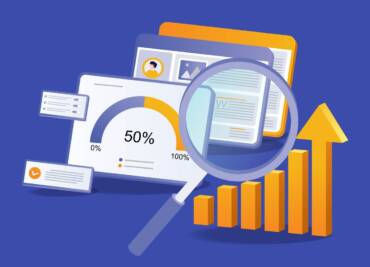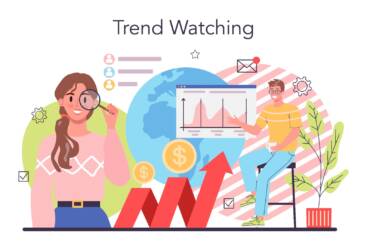In today’s dynamic business environment, staying updated with industry trends and news is crucial for any organization aiming to thrive. Analyzing these trends goes beyond simply collecting information; it involves identifying patterns, understanding market shifts, and predicting future developments. This article explores the importance of analyzing industry trends, effective methods for conducting such analysis, and key tools to stay updated.
The Importance of Analyzing Industry Trends

Analyzing industry trends helps businesses identify emerging opportunities and potential risks. For example, the rise of e-commerce has provided significant growth for companies embracing online retail, while traditional brick-and-mortar stores have faced challenges. Understanding these shifts allows businesses to adapt, innovate, and mitigate risks effectively.
Data-Driven Decision-Making
Trend analysis provides insights that guide strategic decisions, whether it’s expanding into a new market, launching a product, or adjusting pricing strategies. By aligning decisions with current market conditions and future forecasts, businesses can reduce uncertainty and make informed choices that drive growth.
Understanding Consumer Behaviour
Consumer preferences are continually evolving. For instance, the increasing demand for sustainable products has prompted many industries to create eco-friendly alternatives. By tracking these trends, businesses can anticipate changes in consumer behaviour and adjust their offerings to meet new demands.
Effective Methods for Analyzing Industry Trends

SWOT Analysis
SWOT analysis, which stands for Strengths, Weaknesses, Opportunities, and Threats, is a valuable tool for evaluating the factors that impact a business. It enables companies to develop strategies that leverage their strengths and opportunities while effectively addressing their weaknesses and threats.
PESTLE Analysis
PESTLE (Political, Economic, Social, Technological, Legal, Environmental) analysis is a tool that helps businesses evaluate the macro-environmental factors that influence their industry. For example, regulatory changes (Legal) and advancements in technology (Technological) can have substantial impacts on market dynamics. By examining these factors, companies can better anticipate changes and adjust their strategies accordingly.
Porter’s Five Forces
Porter’s Five Forces framework examines the competitive dynamics of an industry through five key elements: the threat of new entrants, the bargaining power of suppliers, the bargaining power of buyers, the threat of substitutes, and rivalry among competitors. This model helps businesses understand their competitive environment and identify factors that impact profitability.
Market Research and Data Analytics
Conducting market research and using data analytics are essential for understanding trends. Surveys, focus groups, and online analytics tools can offer valuable insights into consumer preferences, market demand, and emerging trends. Big data analytics, in particular, can identify patterns and insights from large datasets, helping companies make informed, data-driven decisions.
Key Resources for Trend Analysis

Industry Reports
Reputable sources like Gartner, IBISWorld, and McKinsey provide comprehensive industry reports that offer insights into market trends, growth forecasts, and competitive dynamics. These reports are invaluable for strategic planning and understanding the broader market landscape.
News Outlets and Trade Journals
Staying informed through leading publications such as Bloomberg, Reuters, and industry-specific journals helps businesses keep up with the latest developments. These sources often feature expert analysis and interviews, providing deeper insights into emerging trends.
Social Media and Online Platforms
Platforms like LinkedIn, Twitter, and Reddit are great for tracking real-time industry news and engaging with thought leaders. Following relevant influencers and joining industry-specific groups can provide fresh perspectives and highlight trending topics.
Web Analytics Tools
Tools such as Google Trends, SEMrush, and Similar Web help analyze search trends and website traffic. These insights can reveal shifts in consumer interests and assist businesses in identifying emerging topics or products.
Competitive Analysis Tools
Tools like Ahrefs, BuzzSumo, and SpyFu allow businesses to monitor their competitors’ activities, such as marketing strategies, keyword usage, and social media engagement. Understanding competitor strategies can provide insights into industry trends and help refine business approaches.
Emerging Trends to Watch for in 2024

Sustainability and Green Innovation
With rising awareness of climate change, sustainability is now a key focus for industries. Companies are investing in green technologies and eco-friendly products, driven by consumer demand and anticipated stricter regulations.
Artificial Intelligence and Automation
The adoption of artificial intelligence (AI) and automation is transforming various industries, improving productivity, and enabling personalized customer experiences. Staying updated on advancements in AI can help businesses utilize new technologies and maintain a competitive advantage.
Remote Work and Hybrid Models
Remote and hybrid work styles have become standard in many industries. This shift is affecting sectors such as technology, real estate, and workforce management as companies innovate to adapt to a more flexible workplace.
Digital Transformation
Businesses are increasingly investing in digital transformation by adopting technologies such as cloud computing, cyber security, and the Internet of Things (IoT). These innovations are reshaping industries, driving efficiency, and enhancing customer experiences.
Conclusion
Analyzing industry trends and news is crucial for businesses operating in volatile markets. Techniques such as SWOT analysis, PESTLE analysis, and Porter’s Five Forces model enable businesses to understand market dynamics and consumer behaviour. By utilizing tools like industry reports, web analytics, and competitive analysis software, companies can enhance the reliability and effectiveness of their market monitoring efforts.
Staying informed about emerging trends enables businesses to make strategic decisions, seize opportunities, and navigate challenges. In a world where change is the only constant, proactive trend analysis is essential for not just surviving but thriving in any industry.Friend Media Advertising Agency
